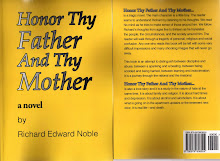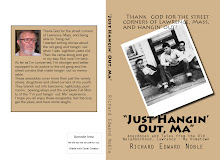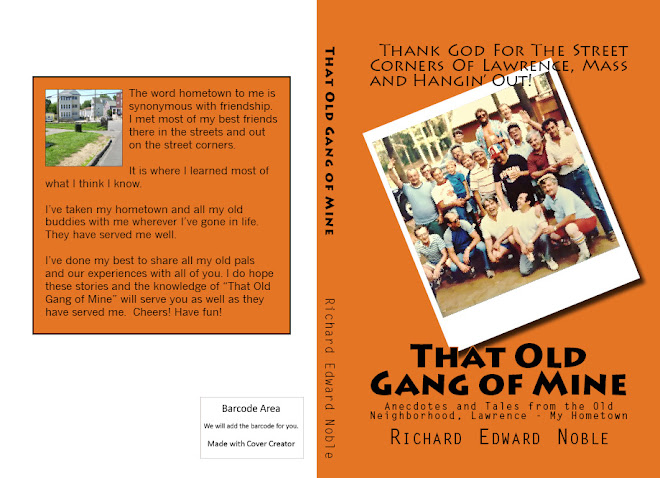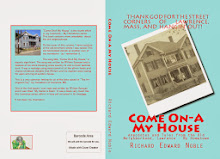This link provides the current federal Supreme Court interpretation of the second amendment.
http://loc.gov/law/help/second-amendment.php
[
According to the most receint decission in 2008 which at the moment only applies to the District of Columbia and is not yet Federal, a citizen has the right under the second amendment to have a gun for his personal protection BUT the type, kind, anount of amunition etc are all subject to government regulation. At this moment the 1939 interpretation is still the law.]
Overview
On June 26, 2008, in District of Columbia v. Heller (PDF), the United States Supreme Court issued its first decision since 1939 interpreting the Second Amendment to the United States Constitution. The Court ruled that the Second Amendment to the U.S. Constitution confers an individual right to possess a firearm for traditionally lawful purposes such as self-defense. It also ruled that two District of Columbia provisions, one that banned handguns and one that required lawful firearms in the home to be disassembled or trigger-locked, violate this right.
The Second Amendment, one of the ten amendments to the Constitution comprising the Bill of Rights, states: “A well regulated Militia, being necessary to the security of a free State, the right of the people to keep and bear Arms, shall not be infringed.” The meaning of this sentence is not self-evident, and has given rise to much commentary but relatively few Supreme Court decisions.
In cases in the 19th Century, the Supreme Court ruled that the Second Amendment does not bar state regulation of firearms. For example, in United States v. Cruikshank, 92 U.S. 542, 553 (1875), the Court stated that the Second Amendment “has no other effect than to restrict the powers of the national government,” and in Presser v. Illinois, 116 U.S. 252, 265 (1886), the Court reiterated that the Second Amendment “is a limitation only upon the power of Congress and the National government, and not upon that of the States.” Although most of the rights in the Bill of Rights have been selectively incorporated (PDF) into the rights guaranteed by the Fourteenth Amendment and thus cannot be impaired by state governments, the Second Amendment has never been so incorporated.
Prior to District of Columbia v. Heller, the last time the Supreme Court interpreted the Second Amendment was in United States v. Miller, 307 U.S. 174 (1939). In that case, Jack Miller and one other person were indicted for transporting an unregistered sawed-off shotgun across state lines in violation of the National Firearms Act of 1934. Miller argued, among other things, that the section of the National Firearms Act regulating the interstate transport of certain firearms violated the Second Amendment. The U.S. District Court for the Western District of Arkansas agreed with Miller. The case was appealed directly to the Supreme Court, which reversed the district court. The Supreme Court read the Second Amendment in conjunction with the Militia Clause in Article 1, Section 8 of the Constitution, and concluded that “[i]n the absence of any evidence tending to show that possession or use of a [sawed-off] shotgun . . . has some reasonable relationship to the preservation or efficiency of a well regulated militia, we cannot say that the Second Amendment guarantees the right to keep and bear such an instrument.” 307 U.S. at 178. The Court concluded that the district court erred in holding the National Firearms Act provisions unconstitutional.
Since United States v. Miller, most federal court decisions considering the Second Amendment have interpreted it as preserving the authority of the states to maintain militias. Several of the post-Miller lower court opinions are discussed here (PDF).
The Supreme Court’s consideration of the Second Amendment this term was precipitated by the U.S. Court of Appeals for the District of Columbia Circuit’s decision in Parker v. District of Columbia (PDF), 478 F.3d 370 (D.C. App. 2007). There, the D.C. Circuit, in a 2-1 decision, ruled that three District of Columbia laws regarding private gun ownership - namely a ban on new registration of handguns, a ban on carrying a pistol without a license, and a requirement that firearms be kept unloaded and locked - violated the Second Amendment. The court held that individuals have a right under the Second Amendment to own handguns for their own personal protection and keep them in their home without placing a trigger lock on them. This is the first decision since the Supreme Court decided Miller in which a federal court overturned a law regulating firearms based on the Second Amendment.
Following the D.C. Circuit’s decision not to rehear the case, the District of Columbia Government filed a petition for certiorari for review of the decision by the Supreme Court. The documents before the Supreme Court at the petition for certiorari stage have been collected here.
On November 20, 2007, the Supreme Court granted (PDF) the petition for certiorari. The Court framed the question for which it granted review as follows: “Whether the following provisions – D.C. Code §§ 7-2502.02(a)(4), 22-4504(a), and 7-2507.02 – violate the Second Amendment rights of individuals who are not affiliated with any state-regulated militia, but who wish to keep handguns and other firearms for private use in their homes?”
The briefs on the merits by the District of Columbia and respondent Dick Anthony Heller, as well as amicus briefs by some 67 “friends of the court,” have been collected here.
In its June 26 decision, a 5-4 majority of the Supreme Court ruled that the Second Amendment confers an individual right to keep and bear arms, and that the D.C. provisions banning handguns and requiring firearms in the home disassembled or locked violate this right.
In the majority opinion authored by Justice Antonin Scalia, the Court first conducted a textual analysis of the operative clause, "the right of the people to keep and bear Arms, shall not be infringed." The Court found that this language guarantees an individual right to possess and carry weapons. The Court examined historical evidence that it found consistent with its textual analysis. The Court then considered the Second Amendment’s prefatory clause, "[a] well regulated Militia, being necessary to the security of a free State," and determined that while this clause announces a purpose for recognizing an individual right to keep and bear arms, it does not limit the operative clause. The Court found that analogous contemporaneous provisions in state constitutions, the Second Amendment’s drafting history, and post-ratification interpretations were consistent with its interpretation of the amendment. The Court asserted that its prior precedent was not inconsistent with its interpretation.
The Court stated that the right to keep and bear arms is subject to regulation, such as concealed weapons prohibitions, limits on the rights of felons and the mentally ill, laws forbidding the carrying of weapons in certain locations, laws imposing conditions on commercial sales, and prohibitions on the carrying of dangerous and unusual weapons. It stated that this was not an exhaustive list of the regulatory measures that would be presumptively permissible under the Second Amendment.
The Court found that the D.C. ban on handgun possession violated the Second Amendment right because it prohibited an entire class of arms favored for the lawful purpose of self-defense in the home. It similarly found that the requirement that lawful firearms be disassembled or bound by a trigger lock made it impossible for citizens to effectively use arms for the core lawful purpose of self-defense, and therefore violated the Second Amendment right. The Court said it was unnecessary to address the constitutionality of the D.C. licensing requirement.
Four Justices dissented, each of which signed both of two dissenting opinions. One, by Justice Stevens, examined historical evidence on the meaning of the Second Amendment to conclude that the amendment protects militia-related interests. A second dissenting opinion, by Justice Breyer, stated that even if the Second Amendment protects a separate interest in individual self-defense, the District of Columbia provisions at issue are permissible forms of regulation.
The outcome of D.C. v. Heller leaves some issues unanswered, including whether the Second Amendment restricts state regulation of firearms, and the standard for evaluating the constitutionality of other laws and regulations that impact the Second Amendment right. These issues will be the subject of future litigation.
As background to the Court’s decision, the following is a selective bibliography listing only some of the substantial literature of books and journal articles on the Second Amendment.
Back to Top
Books
Carl T. Bogus, ed., The Second Amendment in Law and History: Historians and Constitutional Scholars on the Right to Bear Arms. New York: New Press, 2000.
Saul Cornell, A Well-Regulated Militia: The Founding Fathers and the Origins of Gun Control in America. Oxford; New York: Oxford University Press, 2006.
Lawrence Delbert Cress, Citizens in Arms: The Army and the Militia in American Society to the War of 1812. Chapel Hill: University of North Carolina Press, 1982.
Exploring Gun Use in America. Westport, Conn.: Greenwood Press, 2004.
Stephen P. Halbrook, A Right to Bear Arms: State and Federal Bills of Rights and Constitutional Guarantees. New York: Greenwood Press, 1989.
Joyce Lee Malcolm, To Keep and Bear Arms: The Origins of an Anglo-American Right. Cambridge, Mass.: Harvard University Press, 1994.
Andrew J. McClurg, David B. Kopel, and Brannon P. Denning, eds., Gun Control and Gun Rights: A Reader and Guide. New York: New York University Press, 2002.
Robert J. Spitzer, The Politics of Gun Control. 4th ed. Washington, D.C.: CQ Press, 2008.
Mark V. Tushnet, Out of Range: Why the Constitution Can’t End the Battle Over Guns. Oxford; New York: Oxford University Press, 2007.
H. Richard Uviller and William G. Merkel, The Militia and the Right to Bear Arms, or, How the Second Amendment Fell Silent. Durham, N.C.: Duke University Press, 2002.
David C. Williams, The Mythic Meanings of the Second Amendment: Taming Political Violence in a ConstitutionalRepublic. New Haven, Conn.: Yale University Press, 2003.
Back to Top
Articles
Akhil Reed Amar, The Second Amendment: A Case Study in Constitutional Interpretation, 2001 Utah L. Rev. 889 (2001).
Christopher A. Chrisman, Mind the Gap: The Missing Standard of Review Under the Second Amendment (and Where to Find It), 4 Geo. J. L. & Pub. Pol’y 289 (2006).
Robert H. Churchill, Gun Regulation, the Police Power, and the Right to Keep Arms in Early America: The Legal Context of the Second Amendment, 25 Law & Hist. Rev. 139 (2007).
Saul Cornell, Commonplace or Anachronism: The Standard Model, the Second Amendment, and the Problem of History in Contemporary Constitutional Theory, 16 Const. Comment. 221 (1999).
Robert J. Cottrol and Raymond T. Diamond, The Second Amendment: Towards an Afro-Americanist Reconsideration, 80 Geo. L. J. 309 (1991).
Lawrence Delbert Cress, An Armed Community: The Origin and Meaning of the Right to Bear Arms, 71 J. Am. Hist. 22 (1984).
Robert Dowlut, The Right To Keep And Bear Arms: A Right To Self-Defense Against Criminals And Despots, 8(1) Stan. L. & Pol’y Rev. 25 (Winter 1997).
Daniel A. Farber, Disarmed By Time: The Second Amendment and the Failure of Originalism, 76 Chi.-Kent L. Rev. 167 (2000).
Paul Finkelman, “A Well-Regulated Militia”: The Second Amendment in Historical Perspective, 76 Chi.-Kent L. Rev. 195 (2000).
Pratheepan Gulasekaram, Aliens With Guns: Equal Protection, Federal Power, and the Second Amendment, 92 Iowa L. Rev. 891 (2007).
Stephen P. Halbrook, What the Framers Intended: A Linguistic Analysis of the Right to “Bear Arms,” 49(1) Law & Contemp. Probs. 151 (Winter 1986).
R. Don Higginbotham, The Federalized Militia Debate: A Neglected Aspect of Second Amendment Scholarship, 55 Wm. & Mary Q. 39 (1998).
David Thomas Konig, The Second Amendment: A Missing Transatlantic Context for the Historical Meaning of “the Right of the People to Keep and Bear Arms,” 22 Law & Hist. Rev. 119 (2004).
Sanford Levinson, The Embarrassing Second Amendment, 99 Yale L. J. 637 (1989).
Nelson Lund, Outsider Voices on Guns and the Constitution, 17 Const. Comment. 701 (2000) (reviewing Stephen P. Halbrook, Freedmen, The Fourteenth Amendment, and the Right to Bear Arms, 1866-1876, Westport, Ct.: Praeger Pubs. 1998).
Jack N. Rakove, The Second Amendment: The Highest Stage of Originalism, 76 Chi.-Kent L. Rev. 103 (2000).
Glenn Harlan Reynolds & Brannon P. Denning, It Takes a Militia: A Communitarian Case for Compulsory Arms Bearing, 5 Wm. & Mary Bill Rts. J. 185 (1996).
William Van Alstyne, The Second Amendment and the Personal Right to Arms, 43 Duke L. J. 1236 (1994).
Eugene Volokh, The Commonplace Second Amendment, 73 N.Y.U. L. Rev. 793 (1998).
David Yassky, The Second Amendment: Structure, History, and Constitutional Change, 99 Mich. L. Rev. 588 (2000).
Back to Top
Last Updated: 08/08/2012









































